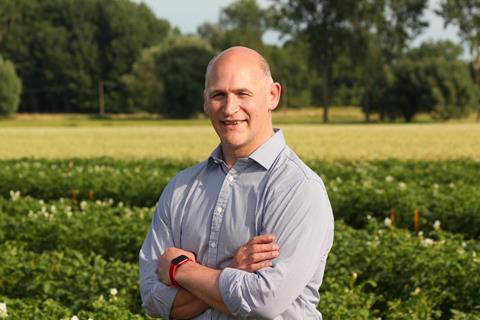Peter Shakespeare of Certis Belchim UK explains that growers must think carefully about how to integrate biorational controls in their IPM programmes as synthetic products continue to be banned

Horticulture is facing some critical challenges, not least the erosion of the crop protection toolkit by regulatory policy. This arguably makes it more challenging to protect yield and quality.
Meeting this with a concerted effort by government, the regulator, and the whole supply chain will help, but the buck essentially stops with the crop protection industry.
The loss of synthetic or ‘conventional’ active substances is happening at a time when registering replacements is difficult due to tough assessment criteria, and huge registration costs are stifling investment.
This has driven significant interest in biological control products, with new companies and larger established crop protection businesses investing heavily in this area.
Certis Belchim is a leader in the registration of biological control products, or biorationals as we call them, in Europe and the UK.
This led to the launch of our Growing for the Future (G4TF) initiative in Europe. And it has been a major success in Spain and the Netherlands, countries with powerhouse horticultural sectors
G4TF is about knowledge transfer, education, and training in integrated pest management (IPM) and successful integration of conventional and biorational products in IPM programmes.
We aim to replicate this in the UK. And recently, alongside a distribution partner and a grower, we have already developed and tested a G4TF programme in British strawberries.
The work showed that conventional chemistry could be used early in the growing cycle to control diseases like powdery mildew and botrytis, before biorationals like Amylo-X take over later.
Two years of data shows the same or slightly higher yield can be achieved using the IPM approach while also raising brix levels. This means sweeter fruit with lower synthetic input that is residue free.
Another area where we can add significant value for UK growers is in field veg, where Certis Belchim already has several biorational products and three more being evaluated by the regulator.
Our horticultural team is currently designing G4TF protocols for field veg, such as brassicas, which will be developed with our customers and growers to produce best-practice programmes.
One of the most important considerations in this new approach is to understand how biorationals work and the parameters that need to be met to maximise their efficacy
Results from conventional chemistry are pretty consistent, even in suboptimal situations. But biorationals can be much more sensitive to a range of practical and environmental factors.
Most are contact-acting, so do not move in or around the plant. They must hit the target, making good quality application and coverage critical.
Some are sensitive to different temperatures, UV light intensity, and water hardness, so these factors need careful consideration before spraying.
We see great potential in biostimulants too, although there is some scepticism over the wide range of claims made, which don’t always translate to the field.
By applying the same scientific rigour to biostimulants as we have to biologicals and proving their worth with a data-driven approach, we will integrate them into G4TF programmes to promote plant health. This is key to fighting pests and disease.
Crop protection is now less about selling individual products and more about the symbiosis between traditional crop protection products, biorationals and biostimulants for a grower in their production system.
It is with this change in mindset that one of the industry’s major challenges will be met.



